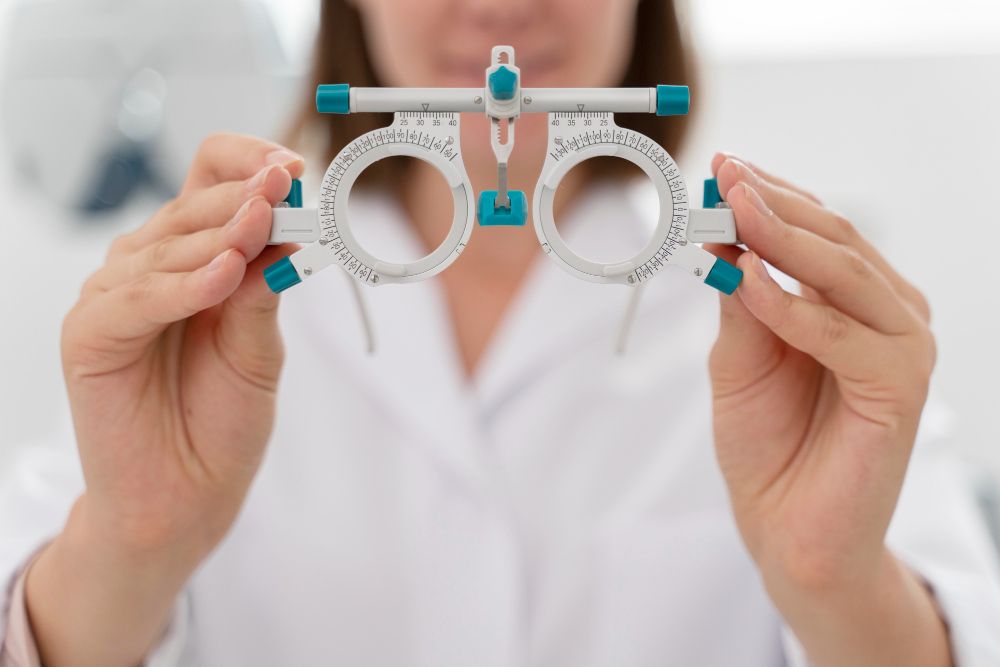Life Insurance Overview: Life insurance is an important financial tool that can provide peace of mind and financial security for you and your loved ones. In this blog post, we'll explore what life insurance is, why it's important, and the different types of life insurance available. What is life insurance? Life insurance is a contract […]
Navigating Vision Insurance for Clearer Coverage

Navigating Vision Insurance for Clearer Coverage
In the complex landscape of healthcare coverage, vision insurance often stands as an unsung hero, providing individuals with the means to maintain optimal eye health and clarity of vision. While medical and dental insurance usually takes center stage, vision insurance ensures people can access quality eye care without breaking the bank.
The Importance of Vision Insurance
Vision insurance is not just about obtaining a pair of stylish frames or updating your look with the latest contact lenses; it's about safeguarding one of your most precious senses. The eyes are windows to the world, and proactive vision care is instrumental in maintaining overall health. Regular eye exams can detect early signs of various health conditions, such as diabetes, hypertension, and certain neurological disorders.
Understanding the nuances of vision insurance is critical to maximizing its benefits and ensuring you and your family have access to the best eye care services. Let's navigate vision insurance's intricacies for more precise coverage.
Critical Components of Vision Insurance
1. Eye Exams: The Foundation of Vision Care
A comprehensive eye exam is the cornerstone of vision insurance. These exams go beyond merely updating your prescription; they assess the overall health of your eyes. Vision insurance typically covers the cost of these exams, ensuring you can schedule regular check-ups without a significant financial burden.
2. Prescription Eyewear: From Frames to Lenses
One of the most tangible benefits of vision insurance is its prescription eyewear coverage. Whether you prefer glasses or contact lenses, having insurance can substantially reduce the out-of-pocket costs associated with obtaining and updating your prescription.
3. Lens Enhancements: Beyond the Basics
Many vision insurance plans extend coverage to lens enhancements, including anti-glare coatings, photochromic lenses, and high-index lenses. These enhancements contribute to the overall comfort and performance of your eyewear, and having insurance coverage can make them more accessible.
4. Contact Lens Coverage: Seeing Clearly without Glasses
For those who prefer the convenience of contact lenses, vision insurance often covers a portion of the cost. Some plans may even include allowances for specialty lenses, such as toric or multifocal contacts.
5. Frames and Fashion: Expressing Your Style
While functionality is paramount, expressing your style is also a significant aspect of eyewear. Many vision insurance plans provide allowances or discounts for frames, allowing you to choose options that align with your fashion preferences.
As the healthcare landscape continues to evolve, so does the realm of vision insurance. Advances in technology, such as telemedicine for eye care consultations and innovative lens technologies, are becoming integral parts of vision coverage. Staying informed about these advancements ensures that you can make the most of emerging benefits and services.
In conclusion, vision insurance is a vital component of comprehensive healthcare. By navigating its intricacies, understanding your coverage, and being proactive in your eye care, you invest in a clear vision and contribute to the overall well-being of yourself and your family. More precise coverage leads to a clearer view of the world — an invaluable perspective in every aspect of life.
Contact Us To Know More
How Family History Affects Critical Illness Coverage Needs!
Your family tree can reveal more than shared traits; it also provides important clues about your health risks. Family medical history is one of the biggest factors in determining how much critical illness coverage you need. Gaining insight into this relationship can assist you in making more informed insurance decisions. 1. Know Your Family’s Health […]
What to Do with Your Health Insurance Policy as You Approach Retirement?
As retirement gets closer, your health insurance needs change. The goal shifts from covering dependents and routine check-ups to preparing for medical care during your golden years. Managing your policy smartly now can make a big difference later. 1. Review Your Existing Coverage Check what your current plan covers and identify any gaps. For instance, […]
